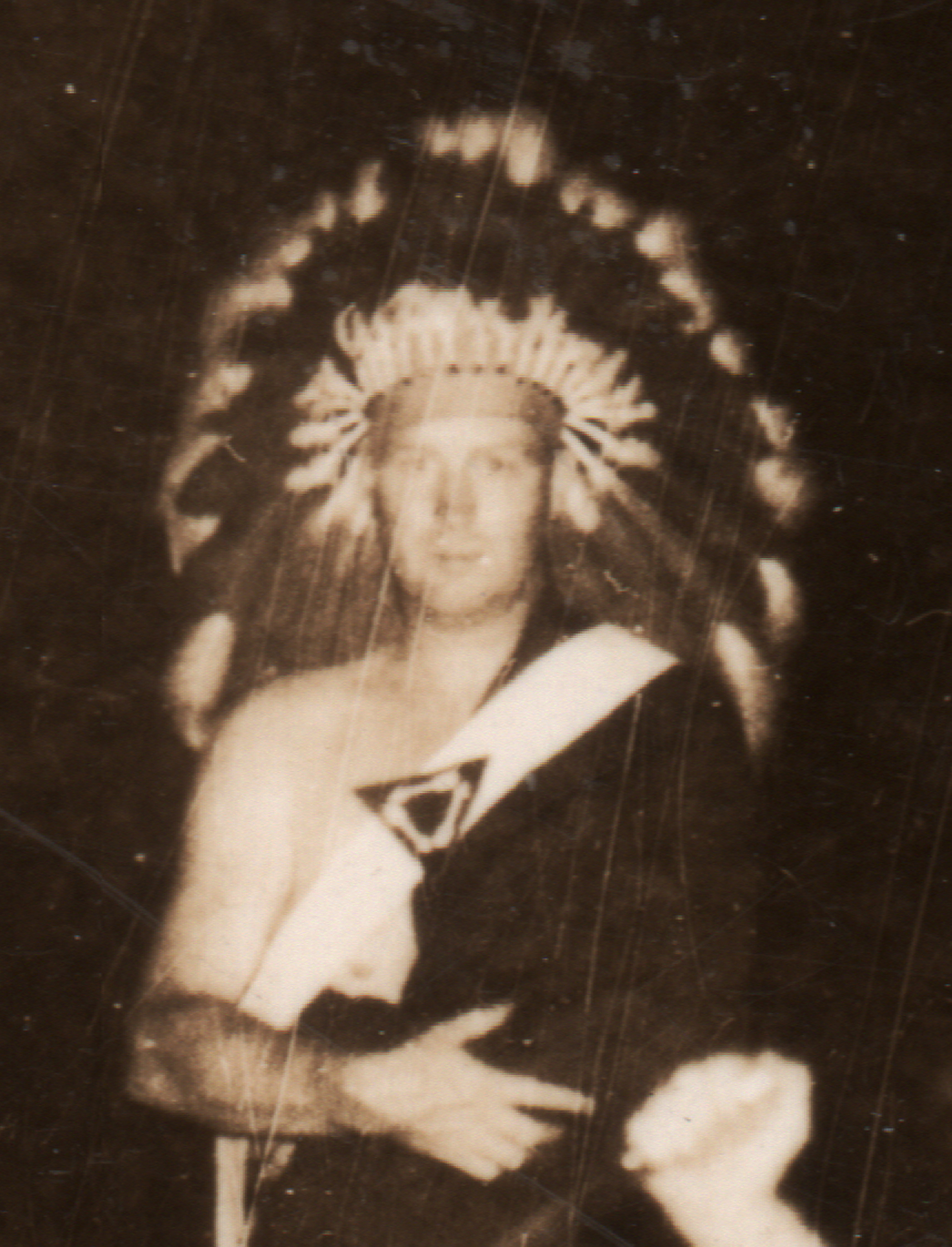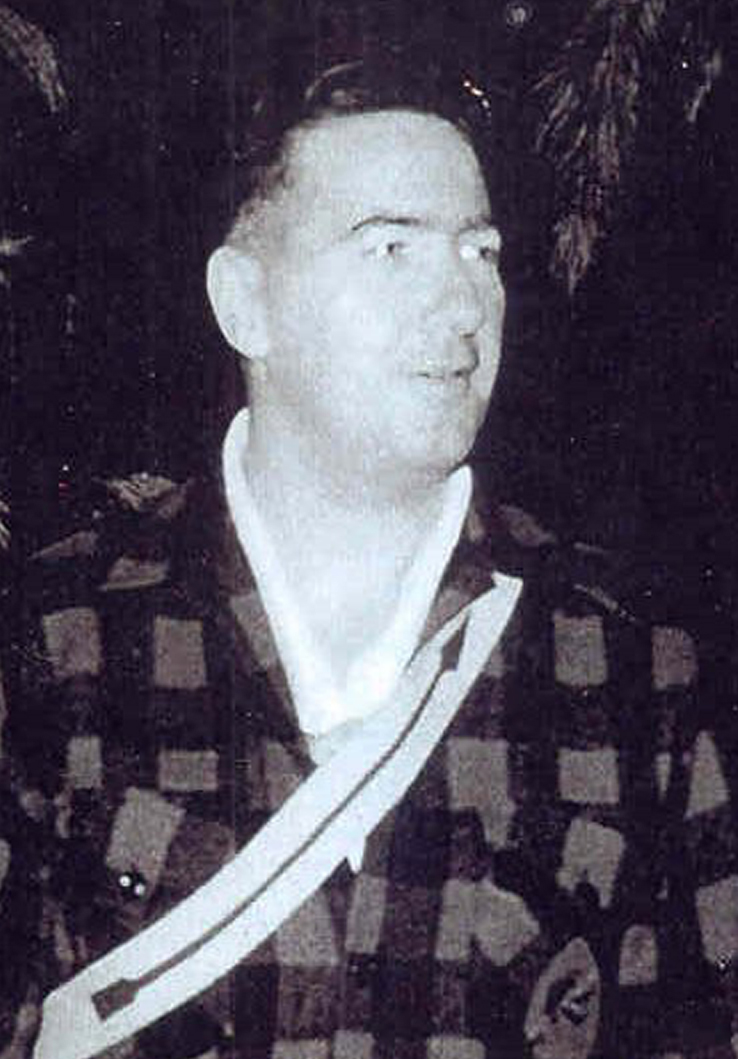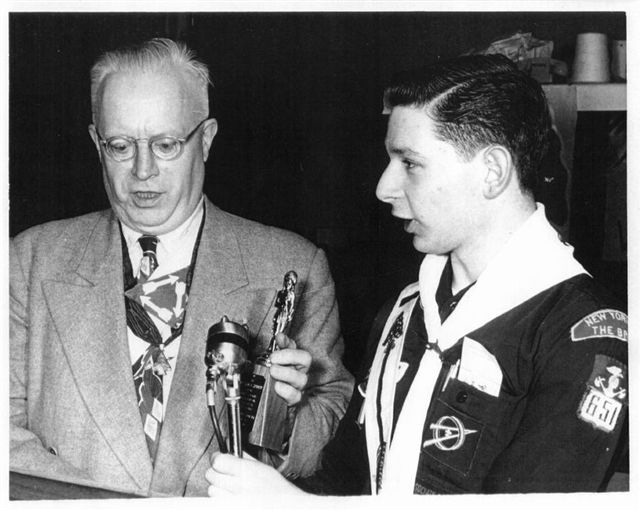First Vigil Honor Sash
The only known photograph of the original sash for Third Degree (Vigil Honor) members is from the rededication council fire at Camp Biddle during the 1921 first meeting of the Grand Lodge. The photo shows the three part “bib” type sash around both E. Urner Goodman’s and Carroll A. Edson’s necks. One side of the triangle had an arrow pointing over the right shoulder signifying the First Degree. One side of the triangle had an arrow pointing over the left shoulder signifying the Second Degree. The third side of the triangle had an arrow pointing to Goodman’s left as he wore it. The third arrow and side completed the triangle, which was the sign of the Third Degree. There are no other known pictures showing this bib; nor are there any known bib type sashes in collections or displays. There is also no evidence that anyone other than Goodman and Edson ever wore this sash.
When the Grand Lodge formed in 1921 there were eight Arrowmen who had been initiated into the Third Degree and they would all need a sash. By August of 1922 The Grand Lodge produced the first Grand Lodge issued Third Degree Sash. In an August 1922 letter from Horace Kern, Secretary for the Third Degree, Kern states in pertinent part:
Those who have already paid for their bands (sashes) and their dues need pay no attention to the above as this is merely a circular letter.
The Third Degree sash was made similar to the First and Second Degree sash in that the base material was white wool-felt with white linen backing. Unlike the First/Second Degree sash there was no large red felt arrow. Instead there was a four and one half-inch red wool-felt equilateral triangle with three small white felt arrows sewn to the middle of the sash. The arrows on the red felt triangle formed a triangle pointed in a clockwise direction. This sash has become known as the “no arrow” sash.
There are varieties of the no arrow Third Degree sash regarding direction of the arrows and notches in the fletchings of the small arrows. The no arrow sash was used through 1937. During the tenure of the no arrow sash there were two other Third Degree sashes used, one with a large red arrow first appeared around 1928 in Region 2 (New York, New Jersey) and a sash used in Region 7 (Illinois, Indiana, Wisconsin, Michigan) that was linen with a large red arrow and a white linen triangle in the middle with red small arrows. In a picture from the 1933 Grand Lodge meeting there are at least four varieties of different Third Degree bands visible.
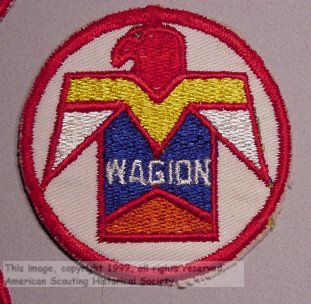
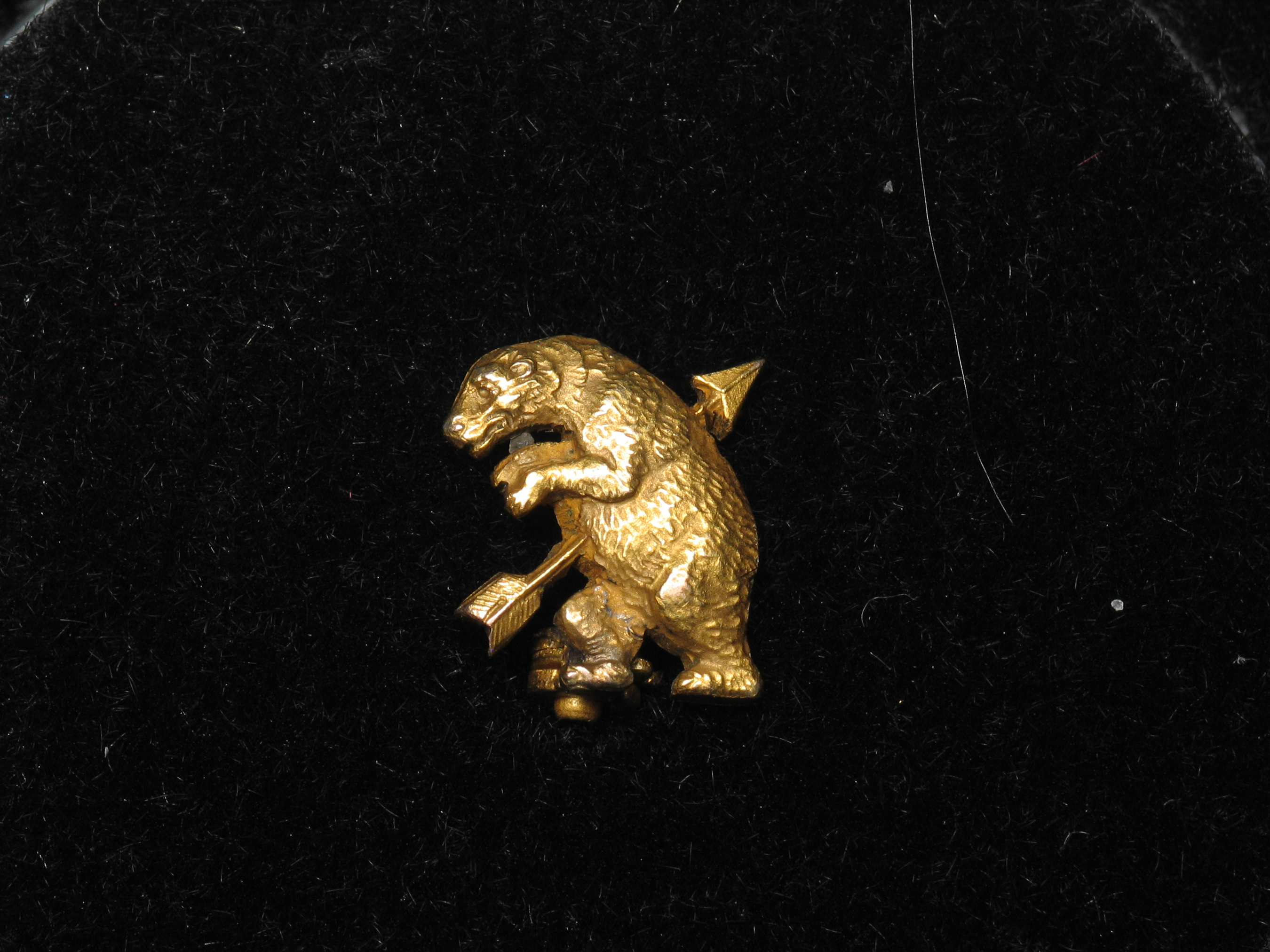
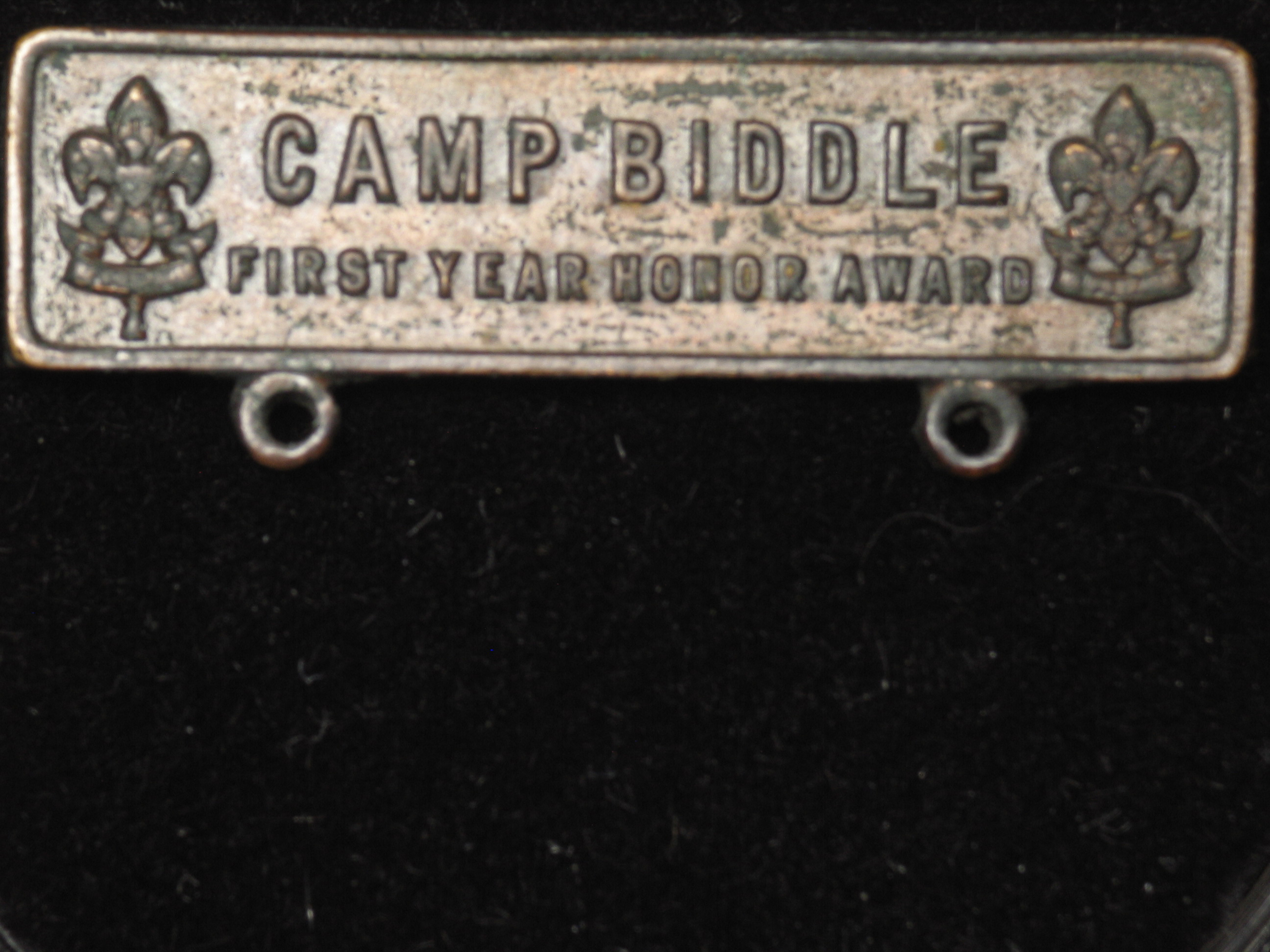
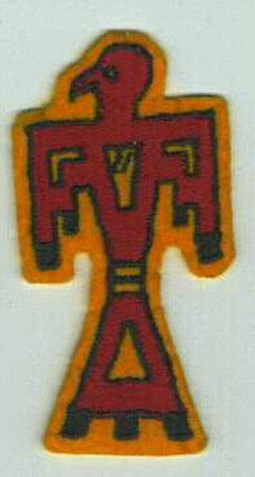

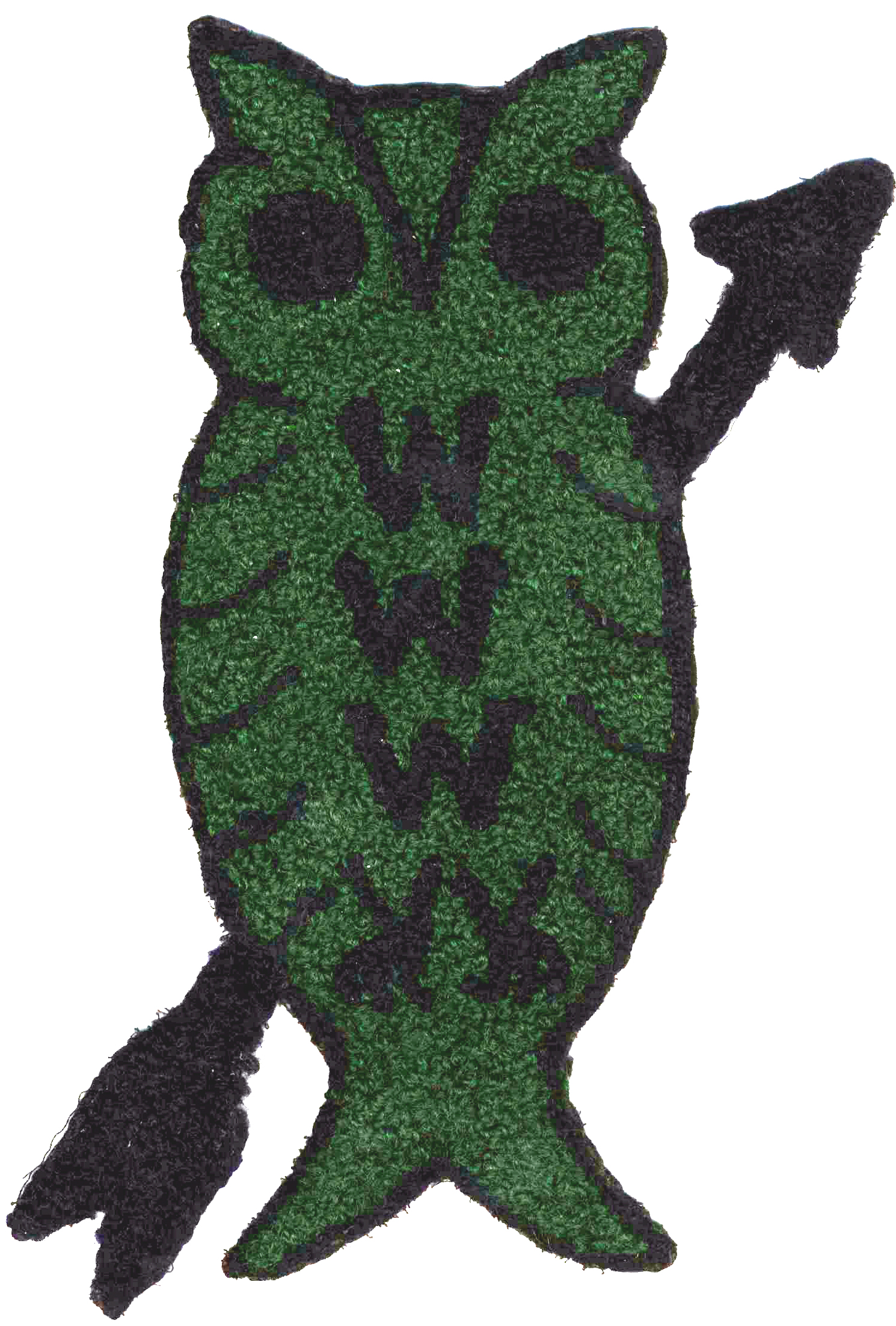 e than two decades.
e than two decades.